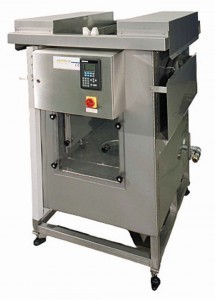Galvabau Air-Jet dryers are still very popular 20 years after their market launch. The company recently supplied two dryer systems to Mexico. Further dryers for the Swiss market are currently under construction. Stain-free drying of complex parts is and remains a major issue in electroplating technology. A significant advantage of Air-Jet dryers is that existing systems can be easily retrofitted with this drying system. The dryers are integrated into the system in Mexico by the end customer on site, without the need for costly on-site electroplating work.
How does an air jet dryer work? After the drying process has started, two devices arranged at the side and designed as nozzle bars move past the product in opposite directions and guide pulsed compressed air over the product. The adhering droplets are broken up into aerosols and discharged via the exhaust air. The remaining liquid film is so thin that it can no longer coalesce into droplets and is evaporated at low temperatures. This ensures stain-free drying.
To date, no restrictions have been identified with regard to the area of application and materials of the parts to be dried. There are restrictions with regard to part geometries (e.g. blind holes) and part attachment to the rack. The company is happy to prove in a test dryer at its Hergiswil site that it can dry all customer parts without stains.
To summarize:
With an Air-Jet dryer, the electroplating customer gets a retrofittable, easy-to-operate system that solves drying problems sustainably. A very good price-performance ratio with low operating costs and a long service life round off the advantages of the Air-Jet dryer. And if you are now wondering whether the dryer will fit into your system: The answer is, "Yes it will fit!" The experts at Galvabau simply replace the old dryer with the new system. Every Air-Jet dryer can be seamlessly integrated into existing production lines, as it is specially tailored to customer requirements and designed to fit perfectly.



